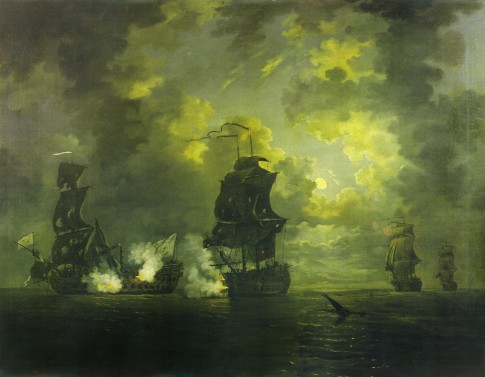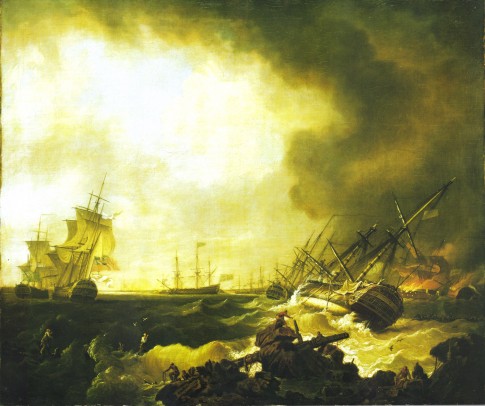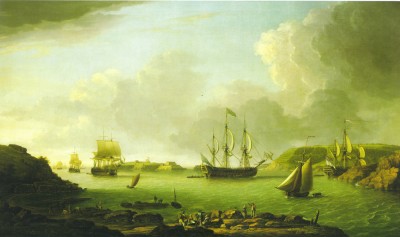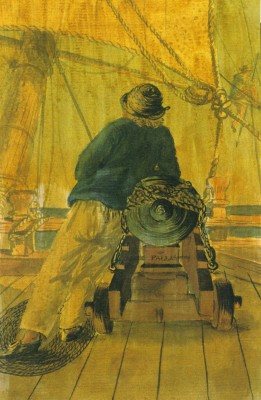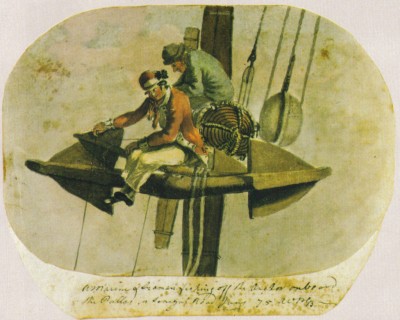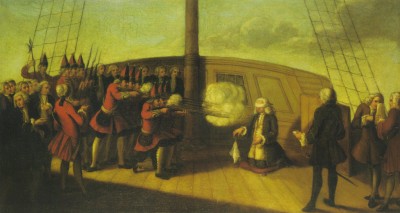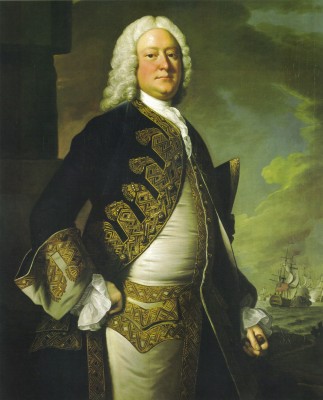THE CAPTURE OF THE FOUDROYANT BY HMS MONMOUTH, 28 FEBRUARY 1758
By Francis Swaine, mid-18th century
(Highest resolution available 6480×5046)
Hawke’s victory was all the more remarkable because he attacked as night fell. Night-time actions were exceptionally dangerous. It was difficult enough to maneuver fleets of ships without collision in daylight and in calm weather, but at night and in a storm it was all but impossible. Ships would hang lanterns in their rigging and off the stern, but distance remained almost impossible to judge. It is not insignificant that, just prior to the Battle of Quiberon Bay, a squadron of British ships attacked and captured the Foudroyant at night, the subject of this painting. British seamanship had reached a level where night-time attack was possible. The officers were sufficiently confident in their own seamanship and perhaps more importantly, in the seamanship of their colleagues, to risk such an attack. Because it was a risky tactic it was unexpected, and because it was unexpected it was particularly effective.
To help officers see at night, ‘night telescopes’ had been invented but the earliest models had a significant flaw. In normal daytime telescopes additional lenses flipped the inverted image the right way round. However, these led to a loss of light and were removed from night telescopes with the result that at night the captain might be able to see his enemy from a long way off, but the image would be upside down.
